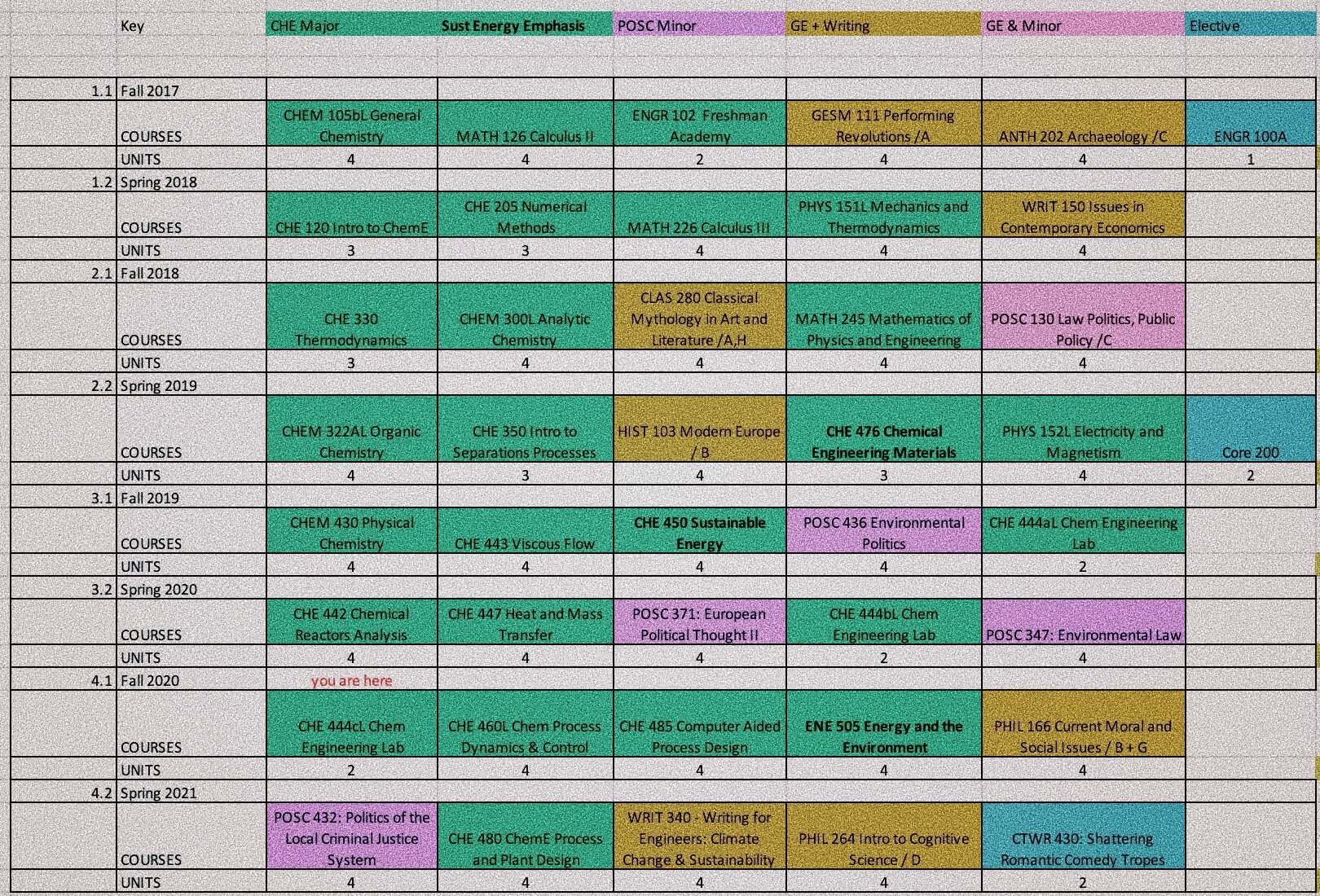I talk through my process of finding a minor, and my general tips in one of my older blogs here, but today I wanted to talk about how to logistically, actually fit a minor into a comprehensive engineering courseload, and provide some examples of how actual engineering course plans can look like, since they can turn out to be a little different to the standard templates (which you can find here).
So to begin with, my template course plan for my major is below:

At first glance, it seems like I only have space for 5 optional electives, all of which are less than four units, which would not allow me to complete any minor (all minors have a minimum of 16 units, usually divided up into five 4-unit classes).
However, after playing some Tetris with my four year course plan (which I highly recommend making in your freshman year and updating each semester or each time you consider a minor), I was able to fit in the minor, as below:

If you’ve read my profile, you know that my minor actually is no longer Classical Perspectives. My junior year, after having completed more than half of my minor, I decided to SWITCH minors to political science, a heavier minor that needed five classes of four units to finish. However, since a GE I had taken my sophomore year (POSC 130: Law, Politics and Public Policy) counted towards the minor, I only had to complete four upper division courses in Political Science, which I was able to spread out through my remaining four semesters at USC. My most recent course plan, showing both my completed major and political science minor, is below:

Since these large spreadsheets may look intimidating, I’ve combined my main takeaways from the last four years of being incredibly indecisive with my minor into the following few pieces of advice:
1. Make a four year course plan.
Make your first one at the end of your first semester at college! It’s okay if it isn’t fully fleshed out, and there are a bunch of empty slots, because that will allow you to understand when and where you have flexibility in your schedule.
2. Don’t be afraid to remake your course plan. Several times.
My document of course plans has seven (!!!) tabs that correspond with different semesters and different minors I had considered.
3. Make use of your GE classes.
For both my minors, at least one class was able to double count to fulfill both my general education requirement and my minor requirement. While this may not be possible for all minors, definitely be aware of it as a tool you can use to take up less elective space.
4. Make use of resources to go above the 18 unit maximum.
At USC specifically, extra funding for classes above 18 units (if they are classes that count towards a major or minor) can be found through the Exceptional Funding and Academic Achievement programs. These programs proved very helpful for me in the occasional instance that I took 19 or 20 unit semesters!















